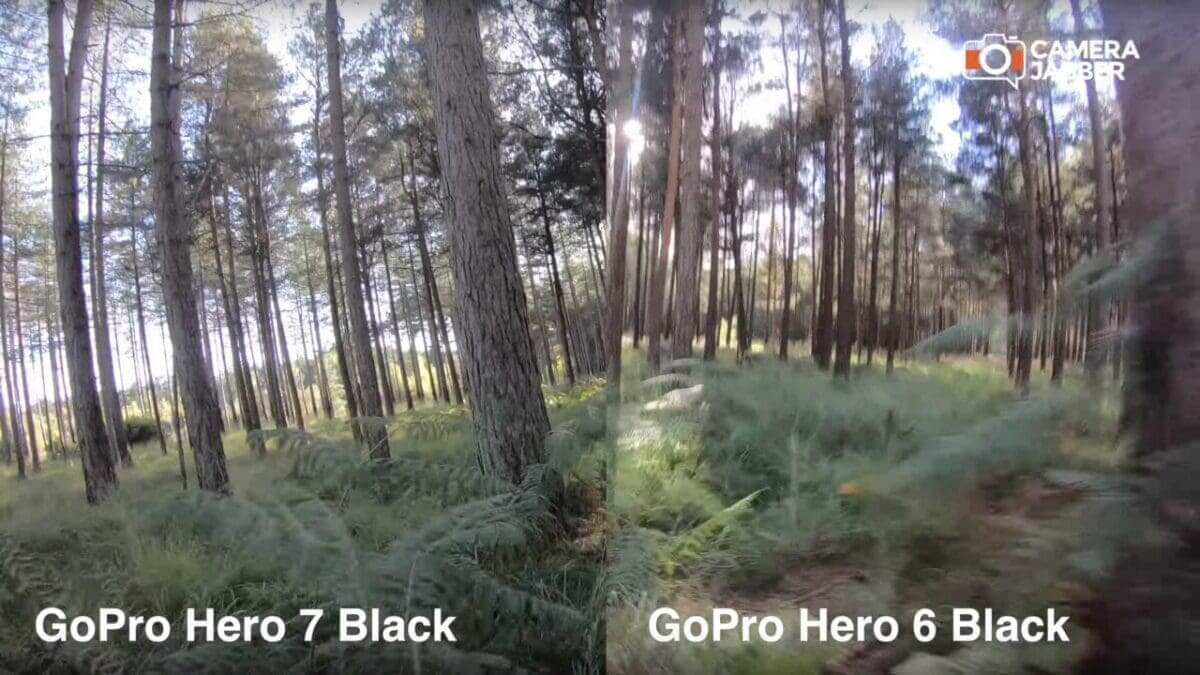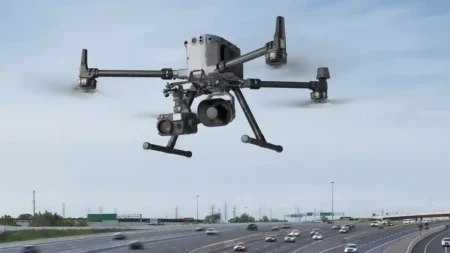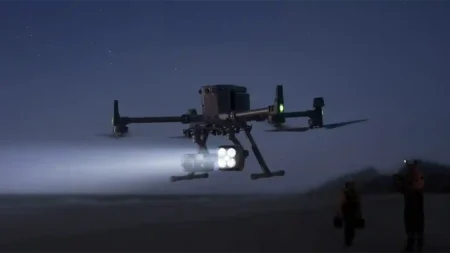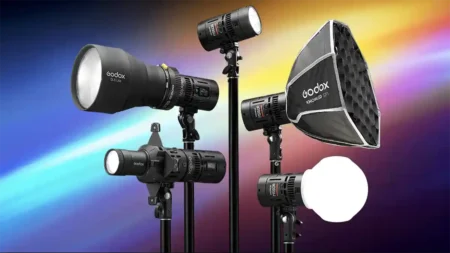The GoPro Hero7 Black has hit the shelves and it is, without doubt, the best GoPro ever. What makes it so great? It is, of course, the big new features HyperSmooth and Live Streaming.
In this feature, I’m going to take a look at HyperSmooth, what it is, what it does and in which modes, resolutions and framerate it works.
I’ll even take a look at switching it off.
What is HyperSmooth
Essentially it’s electronic image stabilisation (EIS), it’s been a thing for a few years and SteadyShot Inside was a big feature of the Sony Action cameras when they first launched.
EIS entered GoPro Hero cameras for the first time with the launch of the Hero5, and once that was coupled with the GoPro Karma Grip you instantly had a winning combination.
That was until you wanted to move at speed or connect in a mic or other accessory, but hey it was still amazing. The fact was until HyperSmooth, motorised stabilisation, as offered by the Karma Grip, was far better than any type of EIS.
But now HyperSmooth changes everything, it essentially boosts the EIS stabilisation of the GoPro Hero7 Black beyond that of any motorised gimbal. Not only does it work under normal handheld conditions but it’s equally as impressive when used by extreme sports enthusiasts when hurtling down a hill, catching a wave or base jumping some rocky outcrop.
As there is no mechanical gimbal to create the stabilised effect you’re no longer limited by an additional device, so where you used to take your GoPro before wanting a stabilised world you can do so once again.
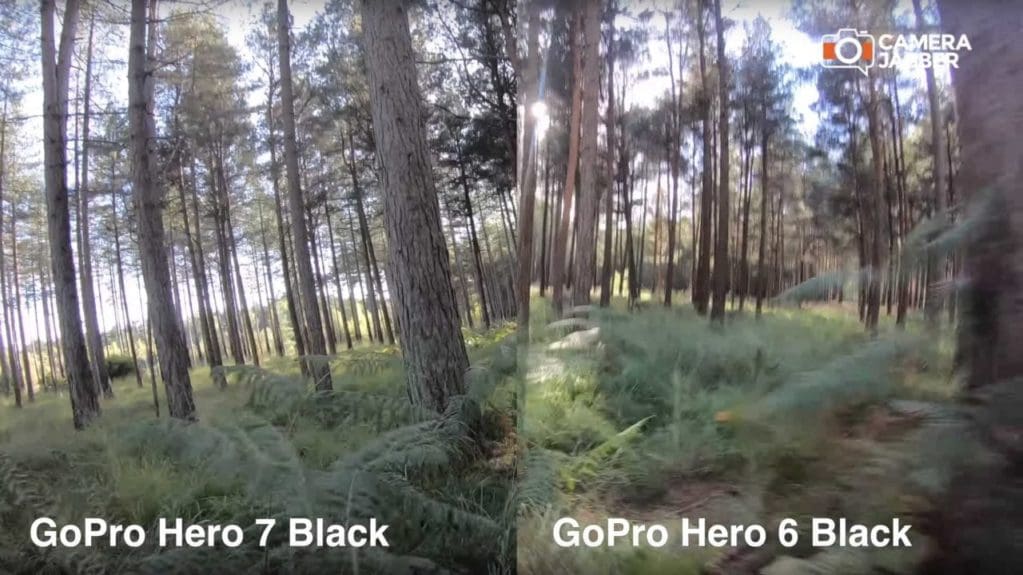
As you can see from this still the amount of detail shown on the Hero7 Black side, there’s far more detail than on the Hero 6 Black side. Showing that the enhanced stabilisation offered by the Hero7 not only smooths out the motion but hugely increases the overall quality and detail of the footage captured. Below is a side-by-side comparison. This footage was shot using GoPro bar mounts on a 1994 Specialized S-Works steel hard tail.
For example with the Hero 6 Black and Karma grip you can’t:
Go swimming
Hang out of a plane without the gimbal wipping round
Likewise, mount the Karma Grip to the exterior of a rally car
Attach the Grip to an animal and expect it to survive.
Connect it to your rucksack without it adding weight and generally getting in the way.
With the GoPro Hero7 Black you can:
Go Swimming, with sharks if you like.
Attach it to any part of a rally car with the knowledge it has at least a 20% chance of survival
Anyone got a lion I can borrow, one for Jason Wharam I think.
You still get an odd look but its far less conspicuous.
What is GoPro Hero7 Black HyperSmooth
HyperSmooth is advanced image stabilisation, like previous versions of EIS it aligns frames to take out the bumps and wobble that come from handholding any camera.
What HyperSmooth does that is different is that it analyses the content of the footage and then processes the frames matching the content.
GoPro image stabilisation usually crops in at 10% on the edges, and although it doesn’t state this when HyperSmooth has selected it looks like this is also the case.
You’ll also notice that when it comes to HyperSmooth, you can only select it when using 16:9 aspect ratio.
Now GoPro usually films in 16:9 for 1080p and 4k although does offer a 4:3 ratio option if you want to film at 1440p or 4k.
This shows that HyperSmooth has far more headroom than the previous IS. Although this headroom has always existed, it’s only now that the GoPro has the processing power to handle it, it can make full use of this extra footage.
If you think normally EIS will steal 10% of the frame, HyperSmooth takes 25% headroom that’s a big leap.
This has all been made possible by the updated GP1 processor and the additional GB of RAM which takes the GoPro Hero7 Black to 2GB of internal RAM.
The outcome is dramatic as the video shows and it also makes features such as TimeWarp possible.
What GoPro Hero7 Black resolutions and framerates does HyperSmooth work?
Essentially all 16:9 resolutions with the exception of 4K at 60fps. It doesn’t work for any 4:3 aspect ratio footage as obviously this gets rid of the headroom required by HyperSmooth.
That doesn’t mean that you’re without EIS at 4:3, if you dip into the settings then you’ll find the option to switch on Image Stabilisation, once selected you will be warned about the crop but at least you have it!
Can I switch off HyperSmooth
No, it’s always on and at the moment there is no simple on/off button. When you see the footage you’ll see on or off there’s probably very little difference so why bother.
If you are adamant that you need to kill off HyperSmooth then the other option is to switch to 4:3 ratio and you can do that by tapping the icon in the top right of the screen.
As there is no headroom, HyperSmooth can’t work so will in effect be switched off. You’ll also have a little more headroom for composing when it comes to editing.
Are there any side effects of using HyperSmooth
Yes, on the odd occasion you’ll see slight warping or rippling in the background, this is due to the digital processing trying to fill and stretch content into p[lace.
It’s a common side effect of applied image stabilisation, but it has to be said that so far there has been little or no sign of this in the footage.
Rolling shutter is another issue that could have been a major problem, but GoPro is pleased that they have completely eliminated this effect from the footage.
A final note on HyperSmooth
HyperSmooth changes everything, stabilised free floating footage is what made the films Rocky and the Shining so groundbreaking.
It wasn’t just the innovation but it gave filmmakers the ability to film from a perspective and style that we’re all used too. It in effect made the footage hyperreal.
With the likes of the GoPro Karma Grip and DJI Ronin-S we’ve had this technology in our hands for a few years, but never at the size of simplicity of the GoPro Hero7 Black.
In my review of the GoPro Hero7 Black, I said it was the best GoPro of all time and probably the best camera of the year. This is due to this compact ultra stabilised form that will enable anyone to film anywhere with a professionalism that has never been possible before.
If you’re into filmmaking then I would highly recommend the GoPro Hero7 Black.
There is one thing, now the GoPro is so good there needs to be an evolution, and that will come with the GnarBox 2 and mobile editing and publishing.
